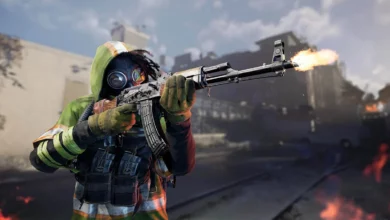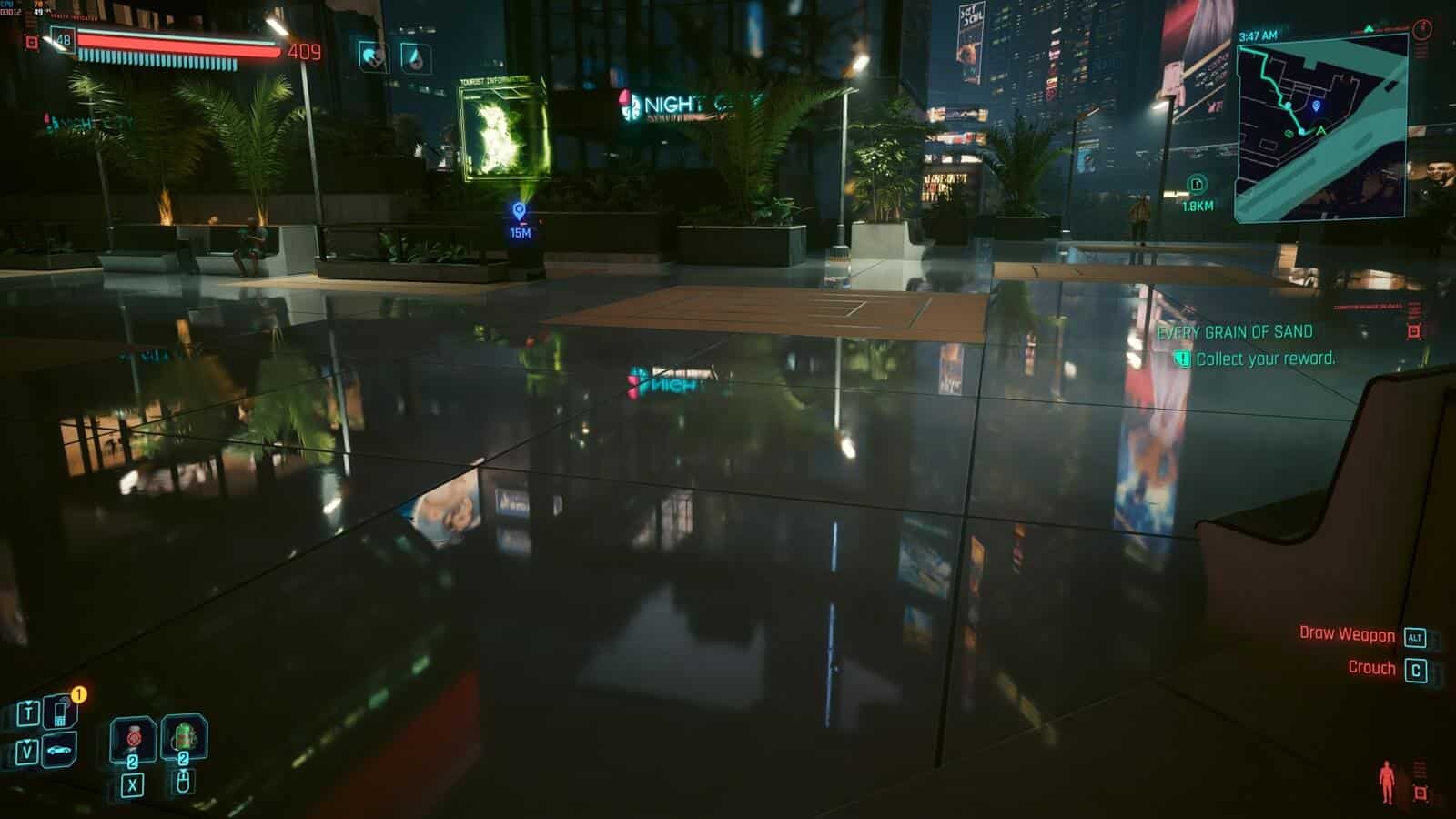
Cyberpunk 2077 has had a renaissance of sorts since the release of Phantom Liberty. Enhanced visuals, path-tracing, and frame generation (a first back then) accompanied the launch. The performance was also improved, especially the CPU performance on multicore devices. Our optimization guide for Cyberpunk 2.0 was published a while back, highlighting the performance impact of each graphics setting. Below, we’ll analyze the game’s performance on low-end and midrange hardware.
Cyberpunk 2077: Phantom Liberty Official System Requirements
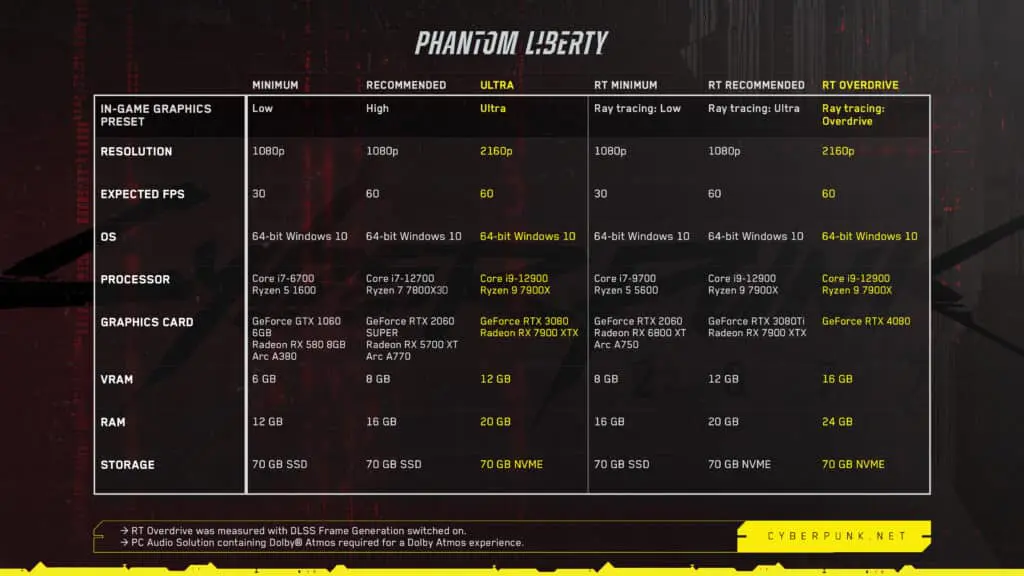
Our Test Bench
| Motherboard | CPU | GPU | Memory |
|---|---|---|---|
| Gigabyte B760M DS3H DDR4 ($99) | Intel Core i5-12400F ($127) | AMD RX 6600 ($189) | 8GB x2 D4 ($40) |
| GIGABYTE B450M DS3H WIFI ($84) | AMD Ryzen 5 5600X ($144) | NVIDIA RTX 4060 ($299)/NVIDIA RTX 3060 Ti (Used-$269) | 8GB x2 D4 ($40) |
PC/System Optimizations
- Turn on Game Mode.
- Enable Resizable BAR.
- Ensure you use the proper XMP/EXPO memory profile (if available).
- Enable Hardware-accelerated GPU Scheduling and Windowed Optimizations.
- Overclock your GPU if you’re narrowly missing the 60 FPS mark.
- For detailed instructions, refer to this guide.
Cyberpunk 2077 Phantom Liberty Benchmarks: Low-end PC
The optimization process for Cyberpunk 2077 primarily depends upon your GPU. If you have a Radeon or RTX 30 series (and lower) GPU, the following benchmarks are worth checking out. We target an average of 60 FPS, and an option to net over 100 FPS at 1080p. You’ve got a few options:
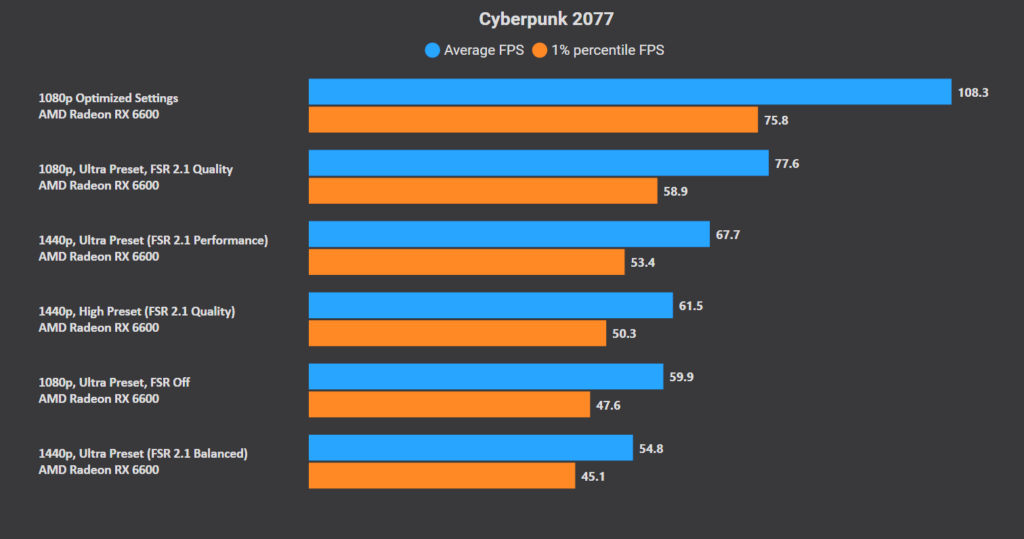
- Use the ultra-quality preset at 1080p without upscaling and ray-tracing.
- Enable the RT Low/Medium preset at 1080p alongside FSR 2.1 “Balanced” or “Performance,” respectively.
- Opt for the ultra-quality preset at 1440p with FSR 2.1 “Performance” and ray-tracing disabled.
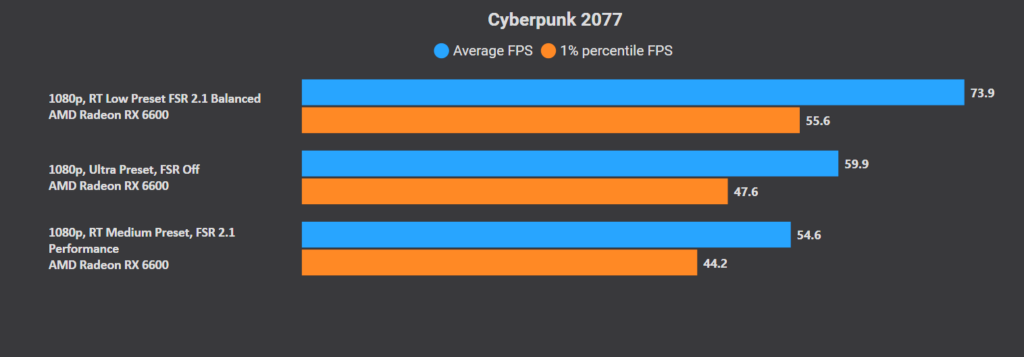
The GeForce RTX 3060 Ti can easily run ray-tracing at 1080p with averages of nearly 70 FPS with DLSS set to quality mode. The RTX 4060 can provide a similar experience with path-tracing, courtesy of frame generation. QHD or 1440p is also doable with low-quality ray-tracing or sheer rasterization and DLSS set to balanced.

Cyberpunk 2077 VRAM Usage and CPU Bottleneck
Cyberpunk 2077 is predominantly GPU-bound at 1080p and higher. Ray-tracing produces multiple but minor frametime spikes while path-tracing magnifies them to a noticeable degree.


If you’re playing Cyberpunk 2077 at 1080p “High” or “Ultra,” you’ll need an 8 GB graphics card. Medium and low settings can get away with a 6 GB graphics buffer.
Cyberpunk 2077 Best Settings for Low-end PC: RTX 3060, RTX 3060 Ti, RTX 4060, RX 6600
| Optimized Settings | RTX 3060 | RTX 3060 Ti | RTX 4060 | RX 6600 |
|---|---|---|---|---|
| Resolution | 1080p | 1080p/1440p | 1080p/1440p | 1080p |
| Target FPS | 60 FPS+ | 60 FPS+ | 60 FPS+ | 60 FPS+ |
| Field of View | 80 | 80 | 80 | 80 |
| Motion Blur | Off | Off | Off | Off |
| Depth of Field | Off | Off | Off | Off |
| Texture Quality | High | High | High | High |
| Texture Filtering | AF 16x | AF 16x | AF 16x | AF 16x |
| LOD | High | High | High | High |
| Contact Shadows | On | On | On | On |
| Improved Facial Lighting | On | On | On | On |
| Local Shadow Mesh Quality | High | High | High | High |
| Local Shadow Quality | High | High | High | High |
| Cascaded Shadows Range | High | High | High | High |
| Cascaded Shadows Resolution | High | High | High | High |
| Distant Shadow Resolution | High | High | High | High |
| Volumetric Cloud Quality | Ultra | Medium | Medium | Ultra |
| Volumetric Fog Resolution | Ultra | High | High | Ultra |
| Maximum Dynamic Decals | Ultra | High | High | Ultra |
| Screen Space Reflections Quality | Off | Off | Off | Off |
| Subsurface Scattering Quality | High | High | High | High |
| Ambient Occlusion | Medium | Medium | Medium | Medium |
| Color Precision | High | High | High | High |
| Mirror Quality | High | High | High | High |
| Upscaling | DLSS Balanced | DLSS Qual (FHD), Bal (QHD) | DLSS Qual (FHD), Bal (QHD) | FSR “Balanced” |
| Ray Tracing Settings | RTX 3060 | RTX 3060 Ti | RTX 4060 | RX 6600 |
|---|---|---|---|---|
| Ray-traced Reflections | On | On | On | On |
| Ray-traced Local Shadows | On | On | On | Off |
| Ray-traced Sun Shadows | On | On | On | Off |
| Ray-traced Lighting | Medium | Medium | Medium | |
| Path Tracing | Off | Off | On | Off |
| Frame Generation (for Overdrive Mode) | DLSS “Quality” | DLSS FG “Quality” |



